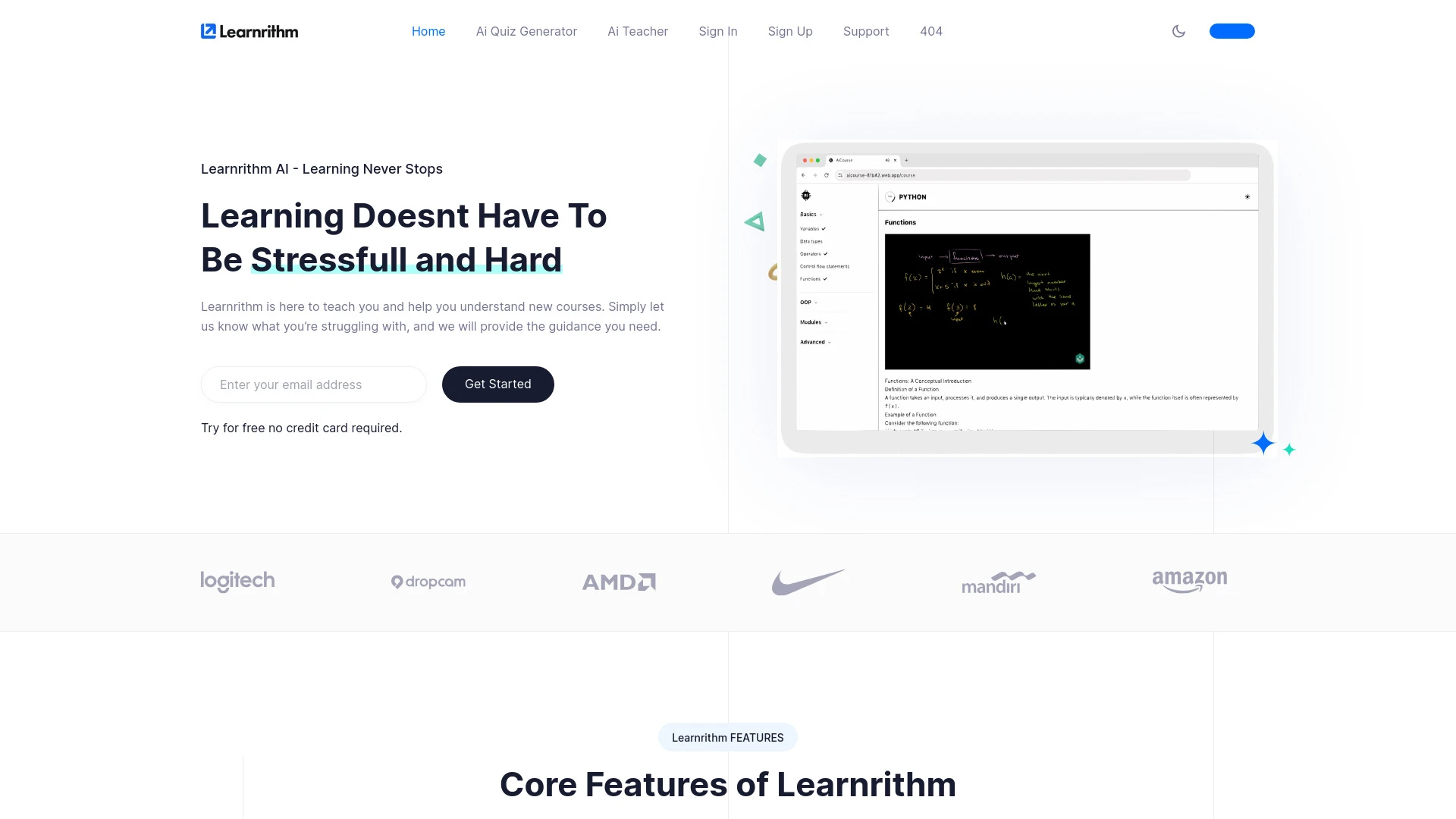ReadTheory versus Learnrithm
ReadTheory and Learnrithm are both educational platforms that focus on enhancing reading skills. ReadTheory, launched in 2012, targets students K-12 with adaptive reading comprehension exercises. In contrast, Learnrithm, introduced in 2018, serves educators by providing personalized learning pathways and analytics for tailored instruction. Both aim to improve literacy through innovative technology.


ReadTheory
Ideal For
Improve reading comprehension for K-12 students
Personalize reading exercises for ESL learners
Assist adult learners in enhancing reading skills
Track progress collectively for classroom performance
Key Strengths
Completely free access for all users
Enhances reading skills effectively
Provides personalized learning experience
Core Features
Adaptive technology for customized learning
Standards-aligned exercises for grades K-12
User-friendly interface for easy navigation
Progress tracking for classrooms
Interactive competitions to engage students
Learnrithm
Ideal For
Mastering new subjects or skills
Preparing for exams and tests
Learning independently at one’s own pace
Enhancing knowledge for professional development
Key Strengths
Tailored learning experiences
Flexibility to study anytime, anywhere
Access to a wide range of resources
Core Features
Personalized learning paths
Interactive quizzes
Certification upon course completion
24/7 access to resources
An extensive variety of learning materials
Popularity
At a Glance
ReadTheory excels in reading comprehension, offering personalized texts and assessments, ideal for students and independent learners. Learnrithm focuses on adaptive math practice, providing tailored exercises for skill reinforcement. Pros for ReadTheory include broad literacy resources; its cons include limited math support. Learnrithm excels in math practice but lacks comprehensive reading resources. Choose ReadTheory for reading skills and Learnrithm for math mastery.
Pricing and Subscription Plans
ReadTheory offers a free tier for individual users, while school plans start at approximately $175 per year for 30 students, scaling with additional students. Learnrithm, on the other hand, provides personalized pricing based on the institution's size and needs, often requiring inquiries for specifics. Both platforms can be cost-effective, but ReadTheory is more budget-friendly for smaller groups, while Learnrithm may cater better to larger organizations.
Performance Metrics
ReadTheory excels in speed with instant feedback on reading comprehension, while Learnrithm prioritizes accuracy through adaptive learning paths. In reliability benchmarks, Learnrithm shows better performance in personalized learning scenarios, whereas ReadTheory shines in standardized assessments. Overall, ReadTheory is faster, while Learnrithm offers greater accuracy.
User Experience
ReadTheory offers a clean, intuitive interface with straightforward navigation that enhances user experience. Its customizable features allow for tailored learning paths. In contrast, Learnrithm provides a more complex interface that may require a steeper learning curve. While both platforms offer robust user support resources, ReadTheory's simplicity tends to facilitate quicker adaptation, making it more user-friendly overall.
Integrations and Compatibility
ReadTheory integrates with Google Classroom and provides an API for seamless workflows. Learnrithm supports integrations with platforms like Google Drive and various LMSs, enhancing accessibility. Both platforms aim to streamline educational processes through these integrations.
Limitations and Drawbacks
ReadTheory's limitations include limited subject coverage and reliance on internet access. Learnrithm may lack real-time feedback and personalized learning paths. Common shortcomings include insufficient engagement and scalability. Workarounds include supplementary resources and hybrid learning models.